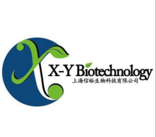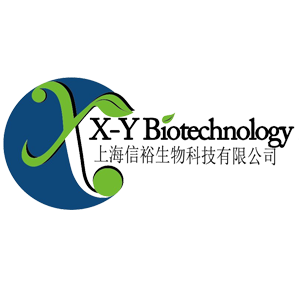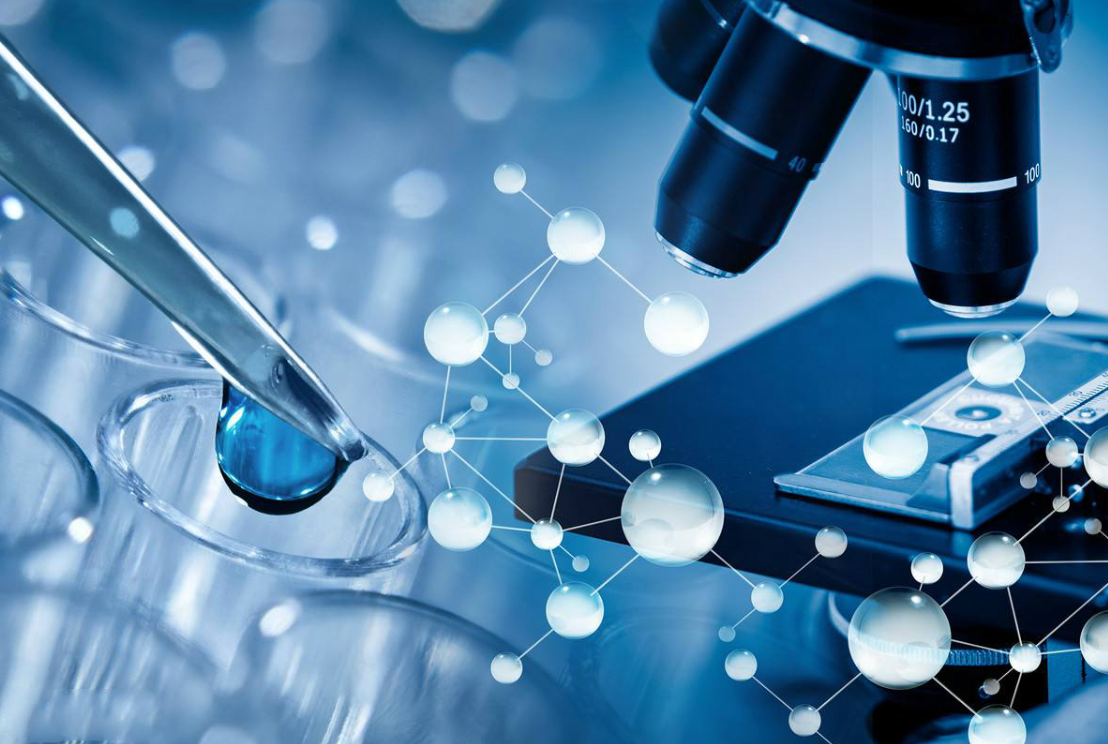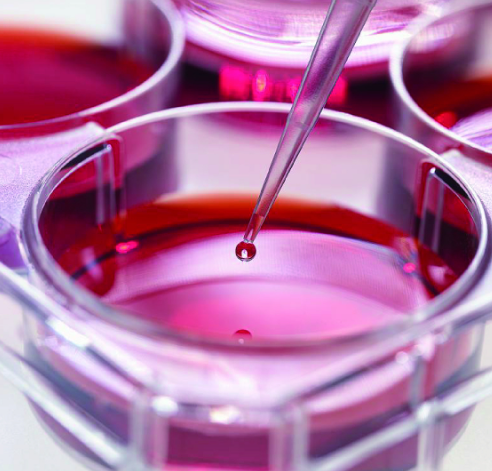Human APT ELISA Kit
Human APT ELISA Kit
Note:
*: [96T/48T]
#: It’s OK to keep the kit in 4℃, if the kit is scheduled to be used up in one week. Please keep the
reagent in -20℃ for long-term storage or repeated use.
The reagent in each vial is slightly more that its volume written on label, please take out the required
volume by certain tools (such as transferpettor, measuring cylinder), rather than pouring directly.
Test principle
This ELISA kit uses Sandwich-ELISA as the method. The micro ELISA plate provided in this kit has
been pre-coated with an antibody specific to Human APT. Standards or samples are then added to the
appropriate micro ELISA plate wells and combined to the specific antibody. Then a biotinylated
detection antibody specific for Human APT and Avidin-Horseradish Peroxidase (HRP) conjugate is
added to each micro plate well and incubated. Free components are washed away. The substrate
solution is added to each well. Only those wells that contain Human APT, biotinylated detection
antibody and Avidin-HRP conjugate will appear blue in color. The enzyme-substrate reaction is
terminated by the addition of a sulphuric acid solution and the color turn yellow. The optical density
(OD) is measured spectrophotometrically at a wavelength of 450 nm ± 2 nm. The OD value is
proportional to the concentration of Human APT. You can calculate the concentration of APT in the
samples by comparing the OD of the samples to the standard curve.
Human APT ELISA Kit
Sample collection and storage
Serum - Allow samples to clot for 2 hours at room temperature or overnight at 4°Cbefore
centrifugation for 20 minutes at approximately 1000×g. Collect the supernatant and carry out the
assay immediately. Blood collection tubes should be disposable, non-pyrogenic, and non-endotoxin.
Plasma - Collect plasma using EDTA-Na2 or heparin as an anticoagulant. Centrifuge samples for 15
minutes at 1000×g at 2 - 8°C within 30 minutes of collection. Collect the supernatant and carry out
the assay immediately. Avoid hemolysis, high cholesterol samples.
Tissue homogenates– For general information, hemolysis blood may affect the result, so you should
rinse the tissues with ice-cold PBS (0.01M, pH=7.4) to remove excess blood thoroughly. Tissue
pieces should be weighed and then minced to small pieces which will be homogenized in PBS (the
volume depends on the weight of the tissue. 9mL PBS would be appropriate to 1 gram tissue pieces.
Some protease inhibitor is recommended to add into the PBS.) with a glass homogenizer on ice. To
further break the cells, you can sonicate the suspension with an ultrasonic cell disrupter or subject it to
freeze-thaw cycles. The homogenates are then centrifugated for 5minutes at 5000×g to get the
supernate.
Cell culture supernate – Centrifuge supernate for 20 minutes to remove insoluble impurity and cell
debris at 1000×g at 2 - 8°C. Collect the clear supernate and carry out the assay immediately.
Human APT ELISA Kit
Other biological fluids –Centrifuge samples for 20 minutes at 1000×g at 2 - 8°C. Collect the
supernatant and carry out the assay immediately. (You can refer to our website for detailed processing
Sample preparation – Samples should be clear and transparent and be centrifuged to remove
suspended solids.
Note: Serum and plasma to be used within 7 days when stored at 2-8°C, otherwise samples must be
divided and stored at -20°C (≤1 month) or -80°C (≤6 months) to avoid loss of bioactivity and
contamination. Avoid freeze-thaw cycles. When performing the assay slowly bring samples to room
temperature. If the sample concentration is higher than the maximum standard value, please dilute it
with appropriate factor according to the actual situation. (A pre-test is recommended to determine the
dilute factor).
Other supplies required
Microplate reader with 450nm wavelength filter
High-precision transferpettor, EP tubes and disposable pipette tips
37°C Incubator, Deionized or distilled water
Absorbent paper
Reagent preparation
Bring all reagents to room temperature before use.
Wash Buffer - Dilute 30mL of Concentrated Wash Buffer into 750 mL of Wash Buffer with deionized
or distilled water. Put unused solution back at 4°C. If crystals have formed in the concentrate, you can
warm it with 40°Cwater bath (Heating temperature should not exceed 50°C) and mix it gently until the
crystals have completely dissolved. The solution should be cooled to room temperature before use.
Standard- Centrifuge at 10,000×g for 1 minute, and reconstitute the Standard with 1.0mL of
Reference Standard &Sample Diluent. Tighten the lid, let it stand for 10 minutes and turn it upside
down for several times. After it dissolves fully, mix it thoroughly with a pipette. This reconstitution
produces a stock solution of 10ng/ml. Then make serial dilutions as needed (Making serial dilution in
the wells directly is not permitted). The recommended concentrations are as follows:10、5、2.5、1.25、
0.625、0.313、0.156、0ng/ml . As if you want to make standard solution at the concentration of 5ng/ml,
you can take 0.5mL the standard at 10ng/ml, add it to an EP tube with 0.5mL Reference Standard
&Sample Diluent, and mix it. The procedures of making the remaining concentrations are all the same.
The undiluted standard serves as the highest standard (10ng/ml). The Reference Standard &Sample
Diluent serves as the zero (0ng/ml).
(500μL/tube,for example. Can also be diluted according to the actual amount,such as 200μL/tube)
1 2 3 4 5 6 7 8 Tube
10 5 2.5 1.25 0.625 0.313 0.156 0 ng/ml
Human APT ELISA Kit
Biotinylated Detection Ab —Calculate the required amount before experiment (100μL/well). In
actual preparation you should prepare 100~200μL more. Dilute the concentrated Biotinylated
Detection Ab to the working concentration using Biotinylated Detection Ab Diluent(1:100).
Concentrated HRP Conjugate — Calculate the required amount before experiment (100μL/well). In
actual preparation you should prepare 100~200μL more. Dilute the Concentrated HRP Conjugate to
the working concentration using Concentrated HRP Conjugate Diluent(1:100).
Washing Procedure:
1. Automated washer: add 350μL wash buffer into each well, the interval between injection and
suction should be set about 60s.
2.Manual wash: add 350μL wash buffer into each well, soak it for 1~2minutes, suck(no inside wall
touching) or get rid of liquid within the micro ELISA plate and pat it dry on thick clean absorbent
paper.
Assay procedure
Allow all reagents to reach room temperature All the reagents should be mixed thoroughly by
gently swirling before pipetting. Avoid foaming.
1. Add Sample: Add 100μL of Standard, Blank, or Sample per well. The blank well is added with
Reference Standard &Sample Diluent. Solutions are added to the bottom of micro ELISA plate
well, avoid inside wall touching and foaming to the best of your ability. Mix it gently. Cover the
plate with sealer we provided. Incubate for 90 minutes at 37°C.
2. Biotinylated Detection Ab: Remove the liquid of each well, don't wash. Immediately add 100μL
of Biotinylated Detection Ab working solution to each well. Cover with the Plate sealer. Gently
tap the plate to ensure thorough mixing. Incubate for 1 hour at 37°C.
3. Wash: Aspirate each well and wash, repeating the process three times. Wash by filling each well
with Wash Buffer (approximately 350μL) using a squirt bottle, multi-channel pipette, manifold
dispenser or automated washer. Complete removal of liquid at each step is essential to good
performance. After the last wash, remove any remaining Wash Buffer by aspirating or decanting.
Invert the plate and pat it against thick clean absorbent paper.
4. HRP Conjugate: Add 100μL of HRP Conjugate working solution to each well. Cover with the
Plate sealer. Incubate for 30 minutes at 37°C.
5. Wash: Repeat the wash process for five times as conducted in step 3.
6. Substrate: Add 90μL of Substrate Solution to each well. Cover with a new Plate sealer. Incubate
for about 15 minutes at 37°C. Protect the plate from light. The reaction time can be shortened or
extended according to the actual color change, but not more than 30minutes. When apparent
gradient appeared in standard wells, you can terminate the reaction.
7. Stop: Add 50μL of Stop Solution to each well. Color turn to yellow immediately. The adding
order of stop solution should be as the same as the substrate solution.
8. OD Measurement: Determine the optical density (OD value) of each well at once, using a
microplate reader set to 450nm. You should open the microplate reader ahead, preheat the
instrument, and set the testing parameters.
9. After experiment, put all the unused reagents back into the refrigerator according to the specified
storage temperature respectively until their expiry.
Important Note:
1. Storage: All the reagents in the kit should be stored following the instructions. Exposure of
reagents to strong light should be avoided in the process of incubation and storage. All the taps
of reagents should be tightened to prevent evaporation and microbial contamination, or
erroneous results may occur.
2. ELISA Plate: Little water-like substance may appear in the ELISA Plate just opened, this is
normal and will not have any impact on the experiment results. Keep the remaining plates in
spare aluminum foil bag, and keep it in temperature suggested before.
3. Add Sample: The interval of sample adding between the first well and the last well should not
be too long, otherwise will cause different pre-incubation time, which will significantly affect the
experiment’s accuracy and repeatability. The interval controlled within 10minutes is good.
Parallel measurement is recommended.
4. Incubation: To prevent evaporation, proper adhesion of plate sealers during incubation steps is
necessary. Do not allow wells to sit uncovered for extended periods between incubation steps.
Do not let the strips dry at any time during the assay. Strict compliance with the given incubation
time and temperature.
5. Washing: The wash procedure is critical. Insufficient washing will result in poor precision and
falsely elevated absorbance readings Residual liquid in the reaction wells should be pat dry
against absorbent paper in the washing process. But don't put absorbent paper into reaction wells
directly. Note that clear the residual liquid and fingerprint in the bottom before measurement, so
as not to affect the microtiter plate reader.
6. Reagent Preparation: As the volume of Concentrated Biotinylated Detection Ab and
Concentrated HRP Conjugate is very small, liquid may adhere to the tube wall or tube cap when
being transported. You better hand-throw it or centrifugal it for 1 minute at 1000rpm. Please
pipette the solution for 4-5 times before pippeting. Please carefully reconstitute Standards,
working solutions of Biotinylated Detection Ab and HRP Conjugate according to the instructions.
To minimize imprecision caused by pipetting, ensure that pipettors are calibrated. It is
recommended to suck more than 10μL for once pipetting. Do not reuse standard solution,
working solution of Biotinylated Detection Ab and HRP Conjugate, which have been diluted. If
you need to use standard repeatedly, you can divide the standard into small pack according to the
amount of each assay, keep them at -20~-80°C and avoid repeated freezing and thawing
7. Reaction Time Control: Please control reaction time strictly following this product description!
8. Substrate: Substrate Solution is easily contaminated. Please protect it from light.
9. Mixing: You’d better use microoscillator at the lowest frequency, as sufficient and gentle mixing
is particularly important to reaction result. If there is no microsocillator available, you can knock
the ELISA plate frame gently with your finger before reaction.
10. Security: Please wear lab coats and latex gloves for protection. Especially detecting samples of
blood or other body fluid, please perform following the national security columns of biological
laboratories.
11. Do not use component from different batches of kit(washing buffer and stop solution can be an
exception)
12. To avoid cross-contamination, change pipette tips between adding of each standard level,
between sample adding, and between reagent adding. Also, use separate reservoirs for each
reagent. Otherwise, the results will be inaccurate!
Calculation of results
Average the duplicate readings for each standard and samples and subtract the average zero standard
optical density. Create a standard curve by plotting the mean OD value for each standard on the y-axis
or x-axis against the concentration on the x-axis or y-axis and draw a best fit curve through the points
on the graph. It is recommended to use some professional software to do this calculation, such as curve
expert 1.3 or 1.4. In the software interface, a best fitting equation of standard curve will be calculated
using OD values and concentrations of standard sample. The software will calculate the concentration
of samples after entering the OD value of samples. If samples have been diluted, the concentration
calculated from the standard curve must be multiplied by the dilution factor. If the OD of the sample
surpasses the upper limit of the standard curve, you should re-test it after appropriate dilution. The
actual concentration is the calculated concentration multiplied dilution factor.
Human APT ELISA Kit
Sensitivity
The minimum detectable dose of Human APT is 0.094ng/ml (The sensitivity of this assay, or Lower
Limit of Detection (LLD) was defined as the lowest protein concentration that could be differentiated
from zero).
Detection Range
0.156–10ng/ml.
Specificity
This kit recognizes recombinant and natural Human APT. No significant cross-reactivity or interference
was observed.
Repeatability
Coefficient of variation were<10%
更多![]()
实战分享|小鼠淋巴细胞的提取和分选之经验小结
厂商
2023.08.21
实战分享 | 原生细胞的合成之经验分享
厂商
2023.07.28
实验常用人肝癌细胞株(HepG2/Hep3B,HuH-7,MHCC97H,PLC/PRF/5)怎么选
厂商
2023.07.03
原代细胞的培养方法及注意事项
厂商
2023.06.26








